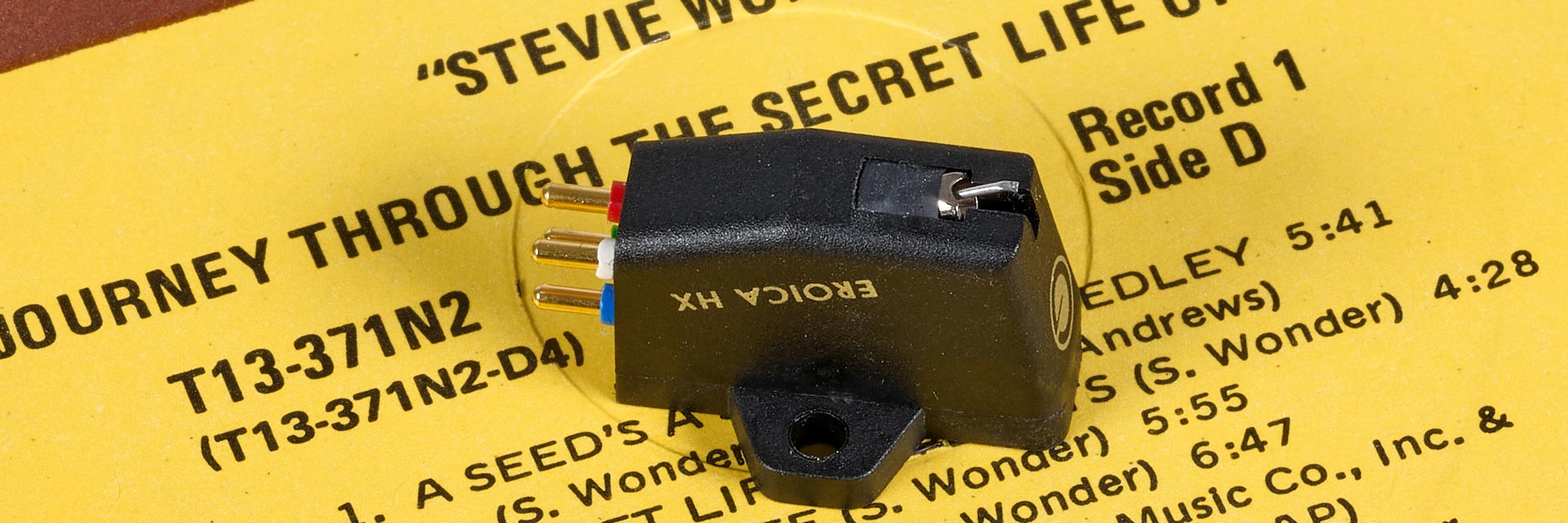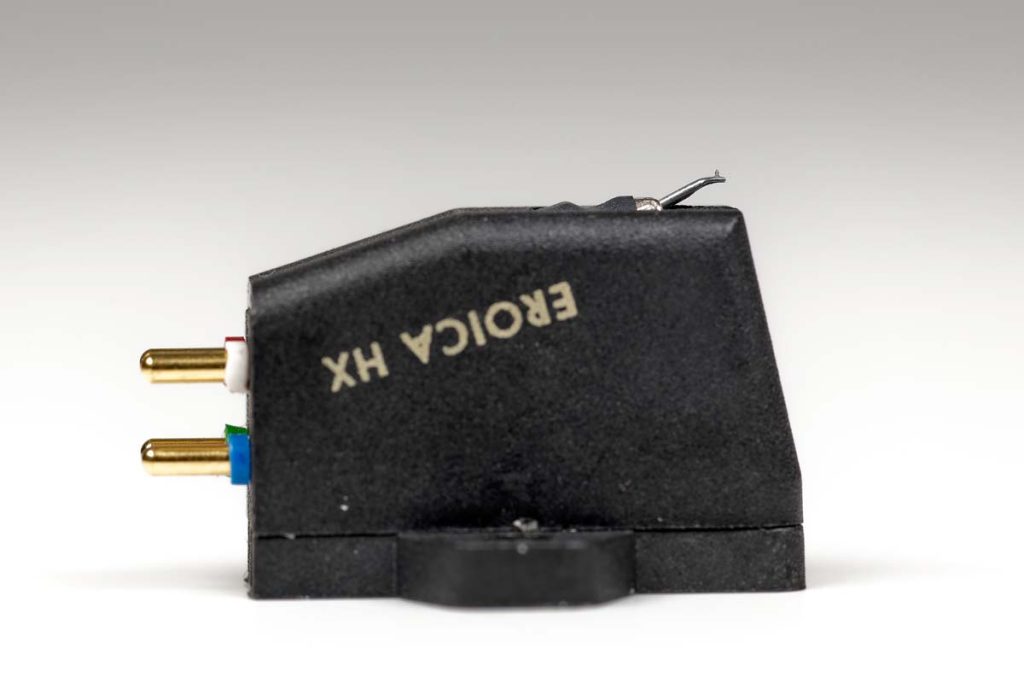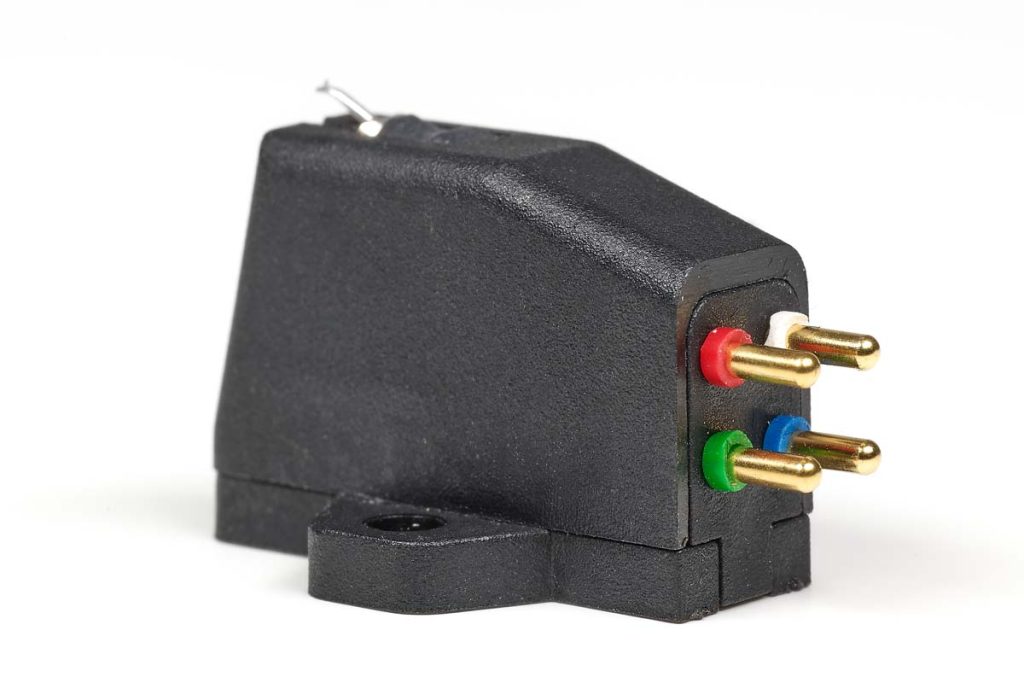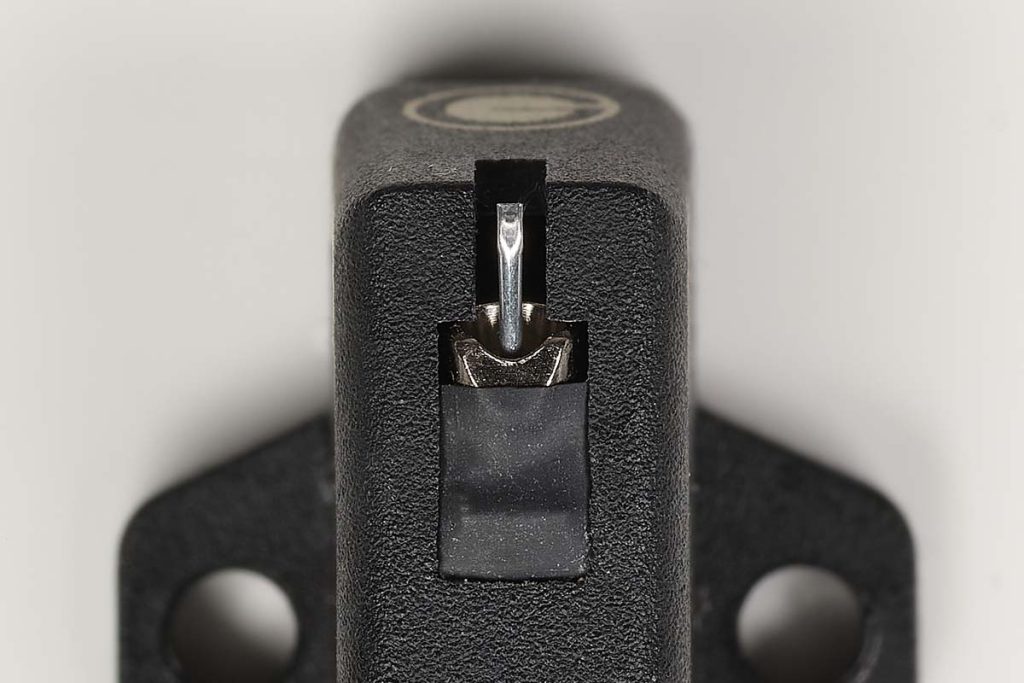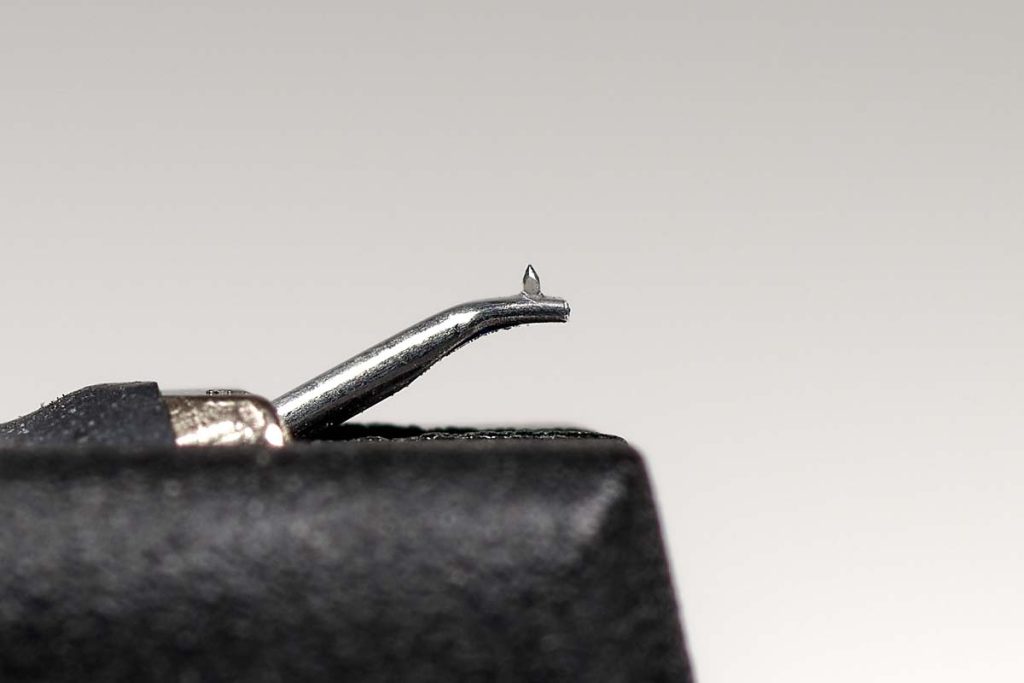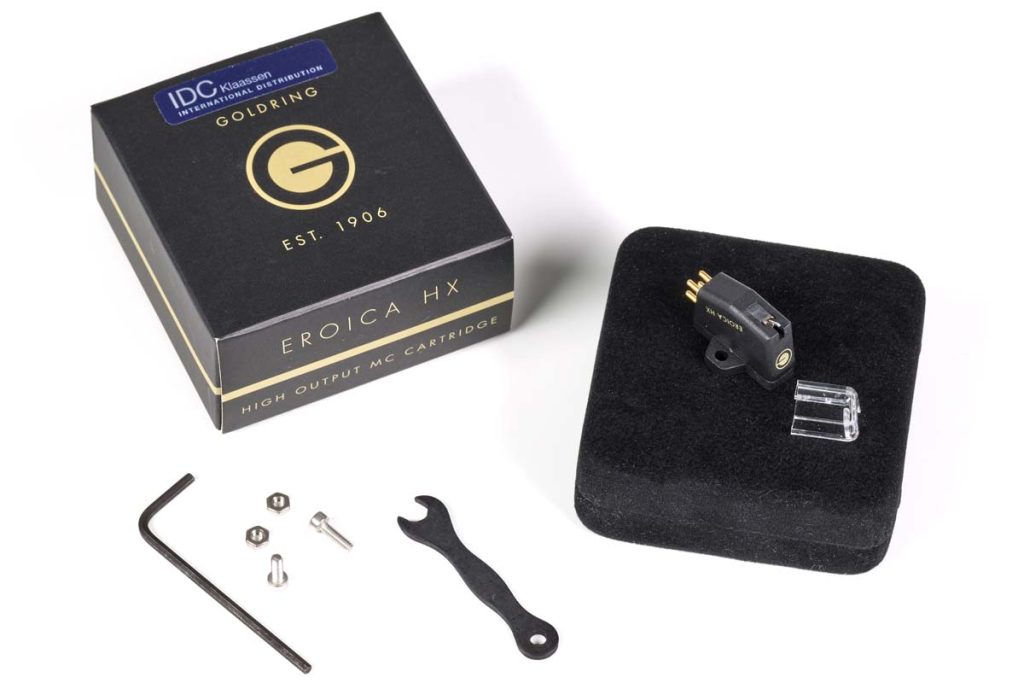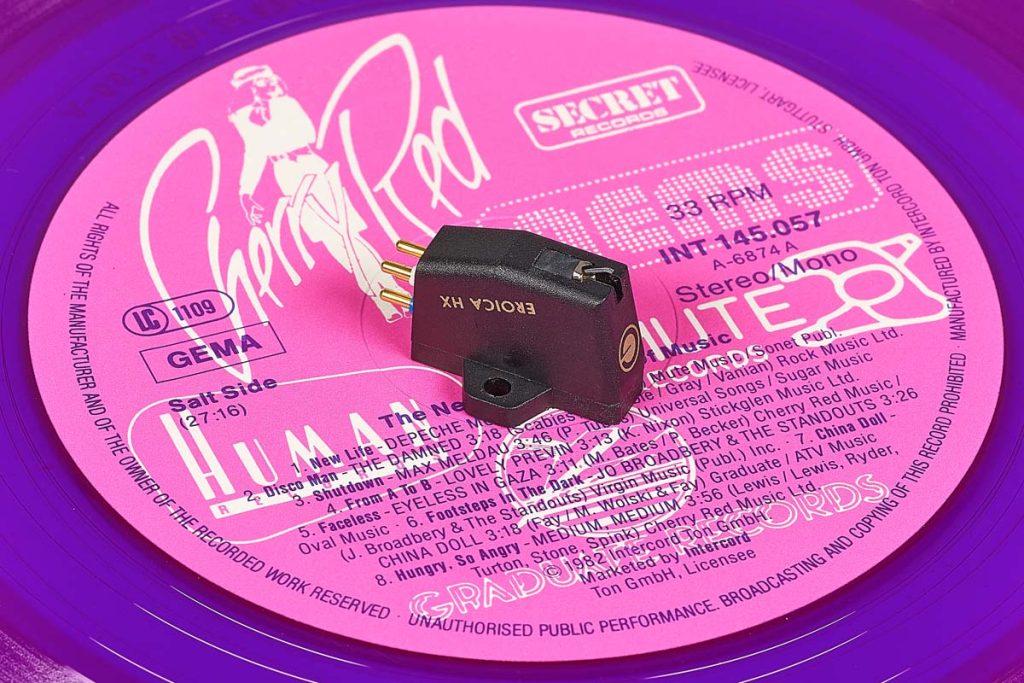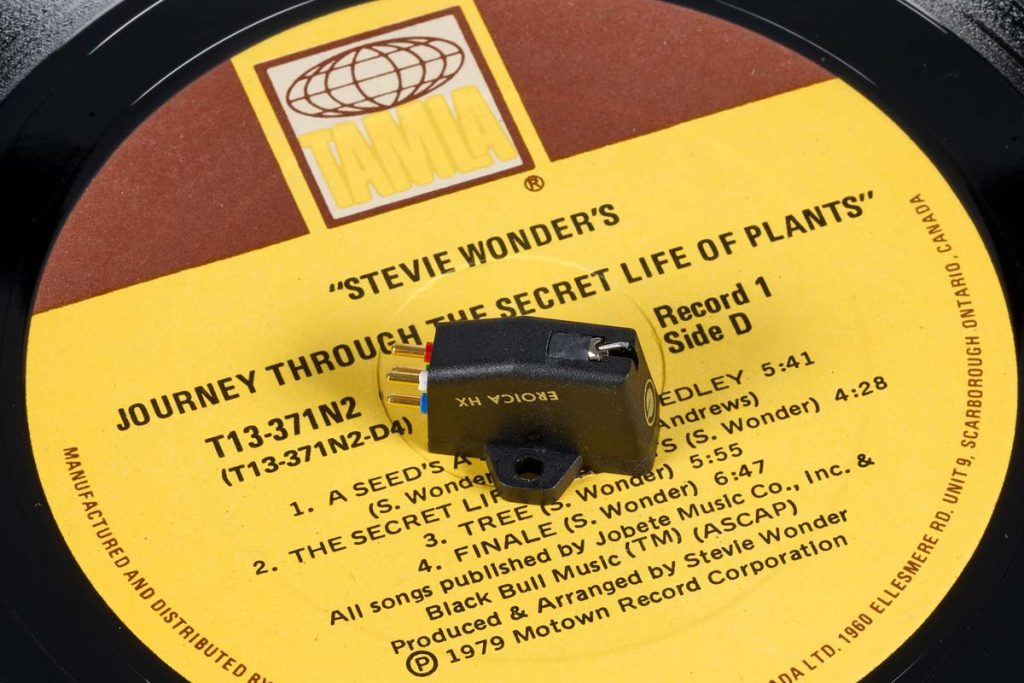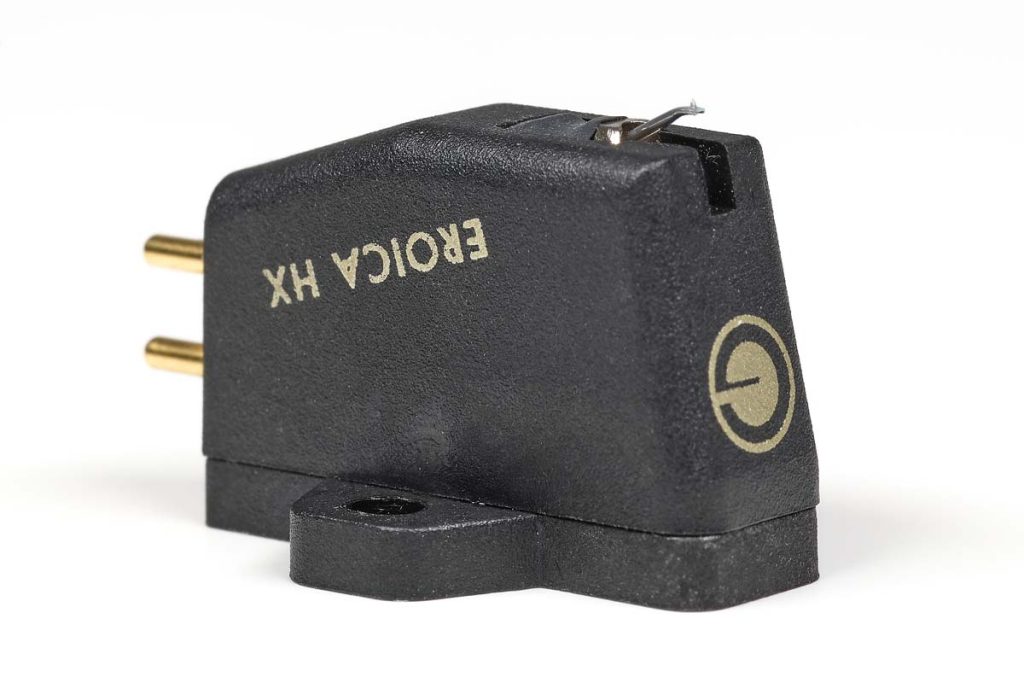The steadily increasing demand for vinyl records in recent years is partly linked to the growing interest of the younger generation. The value and tactility of music as a personal experience is at the forefront, rather than just the ubiquity of streaming playlists.
The Corona-related lockdown period probably contributed to this as well. More time at home meant newfound attention for the vinyl record, and the haptic and visual advantages of the larger format probably contributed to this renaissance to some extent. Good arguments, then, for manufacturers to turn their attention to this new target group. Often the classic older components still have an MM input on the amplifier. Many of the new, less expensive turntables have an MM phono amplifier directly integrated. According to their own experience, the quality has steadily increased and still remained affordable in the entry-level class. The Goldring company was founded generations ago – in 1906 – in Berlin and moved to England in the 1930s, with today’s headquarters in the county of Hertfordshire north of London.
From the beginning, the manufacturer was one of the technology leaders and was known for its “Record Saving Lightweight Design” in tonearms and moving magnet cartridges. In the 1950s, Model No. 500 was one of the lightest pickups in use at the BBC. With its 2010 E-series MM entry-level cartridges, Goldring recognized the signs of the times early on, reaching out to the younger generation in particular. MC cartridges have been added since the 1980s with the Eroica, Excel, Elite, Legacy and most recently the 2018 Ethos series. Constant research and further development of materials and technologies, the wide product range with moderate pricing and the cooperation with premium manufacturers such as Transrotor or Linn have thereby consolidated the spread and the good reputation of “Made in the UK” even in difficult times. With the latest cartridge, the Eroica HX, Goldring is now aiming just as consistently at the growing target group of vinyl up-and-comers who have gained a foothold in professional life and would like to enjoy their growing record collection with increased expectations regarding the music experience. In Goldring’s opinion, the most efficient upgrade is to switch from an MM system to an MC cartridge. The Eroica HX does just that, with a delightful compromise: as a high-output MC, it can be used directly on MM inputs.
An X for an H
The Eroica HX is the successor to the Eroica H, making it the high-output variant of the popular LX moving-coil system. Typically, moving-magnet systems like to be driven with an output voltage of five millivolts, while MC systems are often driven with 0.5 millivolts. The Eroica HX finds itself in a medium gain range with an output voltage of 2.5 millivolts.
The practical test will clarify whether the system might possibly sound too quiet at the MM input and if it can also be operated without problems at an MC input.
Since it is an MC system, the moving masses in the system are lower by principle, and Goldring promises an increased frequency range and channel separation as an upgrade to moving magnet systems when switching to the new HX. With a weight of only 5.2 grams, the “Lightweight Design” principle is also applied here – where there is no mass, nothing can vibrate, distort or resonate. The low weight is largely due to the Pocan housing material, a PBT plastic that is suitable for series production by injection molding or extrusion and is therefore relatively inexpensive. However, this means that it must be used with a medium-weight to lightweight tonearm, otherwise the resonance system of the moving masses in the scanning process will not match and playback will be unclean or, in extreme cases, no longer possible at all.
Yours truly had long ago placed a few strips of felt between the platter and sub-platter as a well-intentioned height adjustment, with the effect that the needle jumped out of the groove now and then during playback. On my Naim ARO, however, the operation works very well. The weight and geometry of the Eroica HX suit this tonearm well, but one of the lighter counterweight variants is used. The fiddly mounting to the headshell with nuts and bolts seems a bit antiquated and quite a stressful process for the inexperienced. The same goes for the needle, which remarkably boasts a sharply contoured Gyger II grind and promises good read-out. The tracking force is recommended at 1.7 grams and corresponds to the usual values of my Lyra Dorian, for example, which I like to use for comparison purposes. Likewise, I listened to two Denon variants, the DL-103R and the Genuin pickup Sting with Van den Hul needle cut for comparison, to give me a subjective sound assessment of the Goldring HX.
All-rounder
After installation, I decided to use the Camtech phono preamplifier as my first playing partner, since it allows me to connect two cartridges and also easily switch between MM and MC modes. This phono amplifier is from an older generation, but its sound is still up to date and it can be bought second-hand at a moderate price. To my dismay, Love & Money, the new record by Katie Melua, starts unexpectedly loud because I still started in my usual MC mode. Fortunately, the Eroica HX is only half as loud as other high-output variants, an operation with relatively low gain at the MC input therefore still well comparable in switching mode to MM.
I stay in MC mode and am amazed at how direct and powerful the Eroica makes music. Although not intended for MC operation, it cannot deny its kinship to the LX. Katie Melua’s voice is concisely in the foreground, the sound is rather compact, but coherent. I switch to the recommended MM mode, Katie Melua now recedes a bit, the musicians and instruments move apart and are more clearly positioned next to each other on stage. Now, however, it sounds a bit more restrained, tonally speaking: with warm timbres. The voice is clear and S sounds are very clean, which I also attribute to the Gyger II grind. The Eroica HX tends to build the from the midrange out, not unlike the Denon DL-103R, and just as dynamically, moreover, it is also capable of long-term use. However, it reminds me even more of my Lyra Dorian, because the Eroica wields an even finer blade than the Denon.
The harmonic overall impression of Roxy Music’s Avalon is striking, still tending to be compact, yet powerful and pithy. Tonally, the Genuin Sting points in the same direction, but with even more resolution and width in the sound, but this one plays in a completely different league in terms of price. With Tracy Chapman’s Crossroads, all the advantages of the Eroica HX come into their own, wonderfully direct and with “boom” in the bass, sonorous and lively, the voice multifaceted, ideal for singer-songwriter and club atmosphere, I think to myself. The longer I listen through my records with the Eroica HX, the clearer it becomes to me that I am dealing with an absolutely coherent all-rounder, which is very reasonably priced with an RRP of around 700 euros.
I switch from the phono stage to a tube preamp from Monk-Audio. Chimes At Midnight, the current album by the Norwegian indie band Madrugada around singer Sivert Høyem and bassist Frode Jacobsen, runs very expressively as usual, the distinctive dark voice builds up from the middle very energetically. As with the Lyra, the frequency edges are somewhat recessed. Via the tube equalizer, the timbres seem to glow even more beautifully and the sound image literally snaps into place. In such a case, one is happy as an author and listener to have found the “best match”. Interestingly, I switch back to MC mode and am again amazed! The voice becomes more concise again, even apparently a bit clearer? The frequency edges now seem to have a bit more energy and the sound stage seems nicely three-dimensional as a result, so the higher gain tends to serve the tube mode well.
This last appearance and the demonstrated performance at MM as well as via MC input underlines the great potential of the Eroica HX and is thus a clear recommendation for the ascent to the “next level” of the hopefully still enthusiastic young generation for analog record playback.
Accompanying Equipment
Turntable/Drive: Avid Diva SP, VPI Avenger, Clearaudio Jubilee Reference | Tonearm: Origin Live Illustrious, Naim ARO | Cartridges: Lyra Kleos, Lyra Dorian, Denon DL-103R, Genuin Sting | Phono preamplifier: Cyrus Phono Signature, Monk-Audio Le Petit, Camtech “Phono Amplifier | Amplifier: MFE TA 211 V | Loudspeaker: Blumenhofer Tempesta 20
Pickup Goldring Eroica HX
Concept: High-output MC pickup | Frequency response (±3 dB): 20 Hz to 22 kHz | Channel separation at 1 kHz: 25 dB | Sensitivity (±1 dB, 1 kHz @ 5 cm/s): 2.5 mV | Equivalent peak mass: 0.6 mg | Vertical scan angle: 20° | Needle type: Radius Gyger II | Load resistance: 47 000 Ω | Load capacitance: 100-500 pF | Cartridge weight: 5.5 g | Tracking force: 1.5 to 2.0 g (1.7 g nom. ) | Warranty period: 2 years | Price: around 700 €

